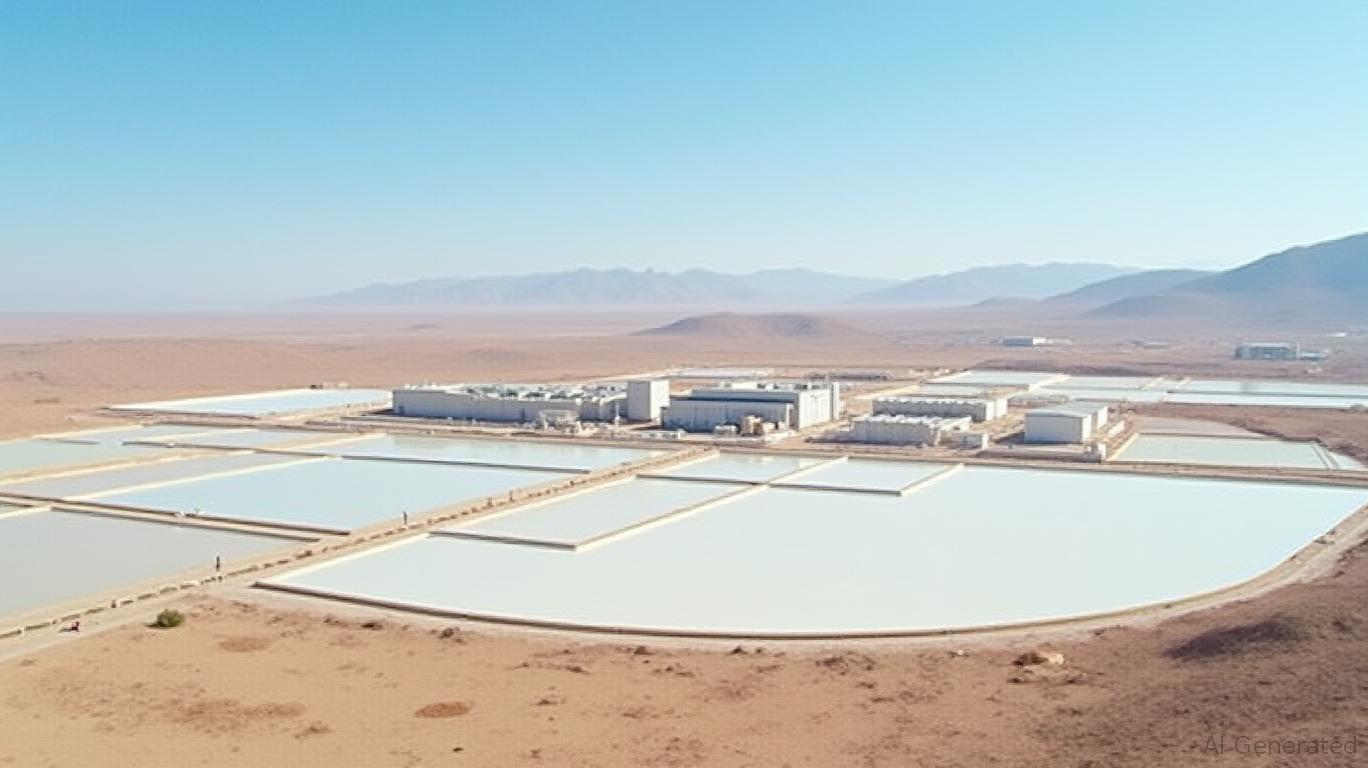Is Albemarle Corporation (ALB) a High-Growth EV Stock? A Deep Dive into Lithium’s Leader
Albemarle Corporation (NYSE: ALB), the world’s largest lithium producer, stands at a critical crossroads in 2025. As electric vehicles (EVs) reshape global energy consumption, the company’s fortunes hinge on its ability to navigate volatile lithium prices, geopolitical trade wars, and the relentless demand for battery materials. Is ALB truly a high-growth stock in the EV revolution, or is it a relic of an earlier era of lithium abundance? Let’s dissect the data.
Ask Aime: "Is Albemarle's lithium production secure in the EV market shift?"

The Lithium Leader’s Financial Crossroads
Albemarle’s first-quarter 2025 results reveal both resilience and fragility. While net income rose 1,620% year-over-year to $41 million due to tax benefits, adjusted losses per share of ($0.18) underscore ongoing struggles. The Energy Storage division—its lithium core—saw sales plummet 34.5% as lithium carbonate prices collapsed to ~$9/kg from 2022’s $20/kg peak. Yet, cost discipline shines: the company achieved 90% of its $350 million cost-cutting target, reducing SG&A expenses by over 20% and maintaining a robust liquidity position of $3.1 billion.
Market Share and Strategic Partnerships: Albemarle’s Moats
Albemarle’s 225,000 metric tons of lithium production capacity and plans to triple this by 2030 cement its leadership. Its Silver Peak facility in Nevada—a cornerstone of U.S. lithium production under the Inflation Reduction Act (IRA)—is poised to supply Tesla and other EV manufacturers with domestically sourced lithium hydroxide. Key partnerships include:
- A five-year supply agreement with Tesla, leveraging IRA incentives.
- Long-term contracts with CATL, LG Energy Solution, and General Motors.
- A $200 million acquisition of a Chinese lithium recycler in 2025, bolstering circular economy capabilities.
Ask Aime: Is Albemarle Corporation truly a high-growth stock in the EV revolution?
These deals insulate Albemarle from short-term price swings and position it to capture BloombergNEF’s projected 6.4% CAGR in EV battery demand through 2030.
Analyst Ratings: Cautious Optimism Amid Headwinds
Wall Street analysts are split. While Albemarle’s 59.56% upside potential (ranking 5th among EV battery stocks) reflects its lithium leadership, growth metrics fall short of “high-growth” thresholds:
- Revenue growth: 9.5% annually (below the 20% bar).
- Earnings growth: 63.3% annual EPS growth, but losses persist.
Price targets have been slashed—Morgan Stanley lowered its target by 14.7% to $58—yet the stock’s $75.78 average target still implies upside from its April 2025 price of $58.35.
The Risks: Lithium’s Volatility and Overcapacity
Albemarle’s challenges are stark:
1. Lithium Glut: Global oversupply of 120,000 tons LCE in 2025 has driven prices to multiyear lows.
2. Trade Wars: U.S. tariffs and China’s subsidy-driven lithium rush threaten margins.
3. Technological Shifts: Sodium-ion batteries and recycling innovations could erode lithium demand.
Yet Albemarle’s $7,500–$9,000/ton production costs—among the lowest in the industry—give it a survival edge. Competitors like Pilbara Minerals and SQM have cut output or posted losses, while Albemarle’s cost discipline keeps it afloat.
The Bottom Line: A High-Growth Stock With a Long-Term Bet
Albemarle is not a high-growth stock in the traditional sense—its revenue and EPS growth rates lag peers. However, its strategic positioning in the EV supply chain, dominance in low-cost lithium production, and partnerships with industry titans like Tesla and CATL make it a long-term winner.
Consider these facts:
- By 2030, lithium demand for EVs could hit 2.3 million tons/year, up from 0.7 million in 2023.
- Albemarle’s Silver Peak expansion (targeting 20,000 tons/year) and Direct Lithium Extraction (DLE) pilot (cutting costs by 30%) position it to capitalize on U.S. domestic demand.
- Analysts project a rebound in lithium prices by 2026, aligning with BloombergNEF’s “supply deficit” forecast.
While short-term volatility will test investors, Albemarle’s $2.8 billion cash reserves, diversified operations, and IRA-aligned projects make it a high-growth proxy for the EV revolution—provided lithium prices stabilize and EV adoption accelerates.
In conclusion, Albemarle is no Tesla or Rivian in terms of explosive growth, but its role as the unsung backbone of the EV industry offers a compelling investment thesis for those willing to bet on lithium’s enduring importance. The question is not whether ALB is high-growth today—but whether it will dominate the next decade of EV battery production. The data suggests it will.
Final Analysis: Buy for long-term EV exposure. Hold for cost discipline and strategic partnerships. Avoid if seeking rapid EPS growth.










